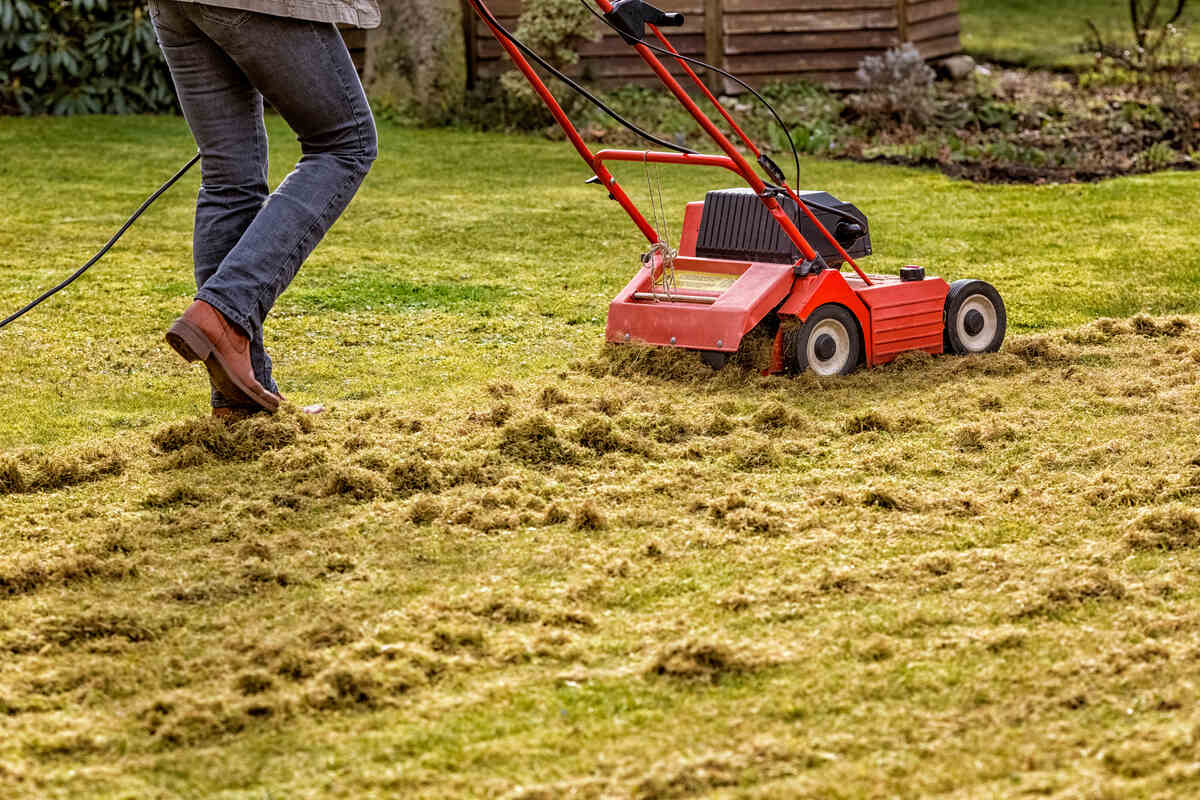
Knowing how to dethatch your lawn is simple: Wait for grass-friendly weather, mow the lawn shorter, then use a manual rake or a powered dethatcher to thin out the thatch.
For you, it’s a few hours of work. For your lawn, it’s a boost of healthy growth. Dethatching breaks the tight cover of organic debris on the soil and lets in more air, water, and nutrients to feed the growing grass. We’ll tell you how to dethatch your lawn — from preparing the lawn to what to do after dethatching — to reap all the benefits.
What is Thatch?
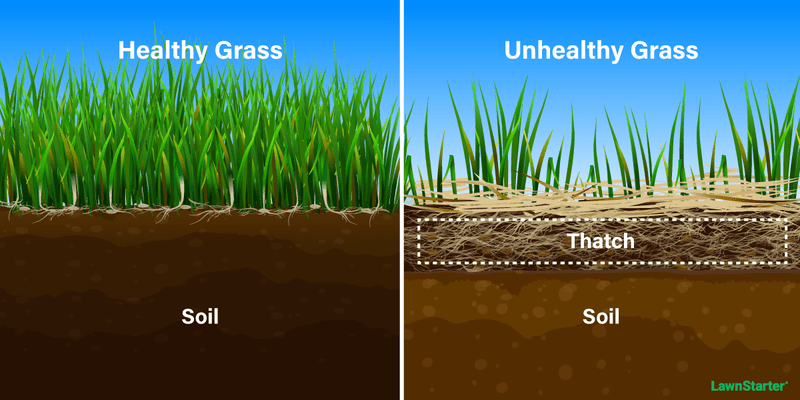
Thatch is a layer of dead and living roots, runners, and stems that forms between the soil and the grass. Common causes of thatch buildup include overwatering, overfertilization and repeated pesticide applications.
When it stays under 1/2-inch thick, thatch is beneficial and protects the soil from extreme temperatures and drought. A thicker layer of thatch, however, blocks airflow, nutrients, and water and attracts insects and fungi, so it needs to be managed to keep the lawn healthy.
See Related: What is Thatch in Your Lawn?
Choose a Good Time to Dethatch
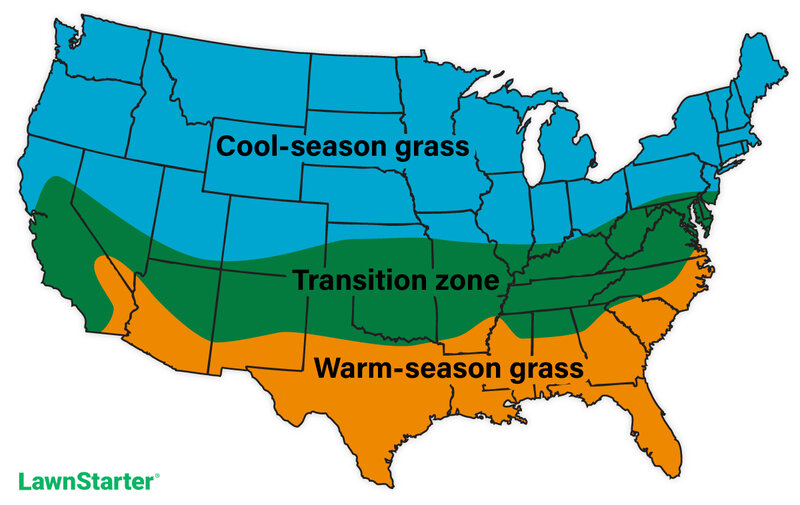
Dethatching can damage the grass, so first of all, make sure it’s necessary. Dig out a small piece of sod (3×3 inches) and measure the thatch (the fibrous, spongy layer of organic matter between soil and grass). Dethatch if it’s over 1/2-inch thick.
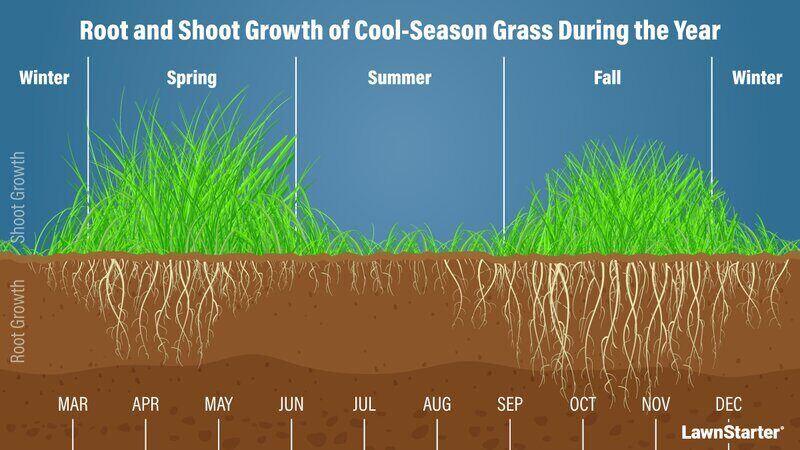
When is the best time to dethatch the lawn during the year? Remove thatch from the lawn only when the grass is actively growing and can recover easily. That is late spring to early summer for warm-season grasses and late summer to early fall for cool-season grasses.
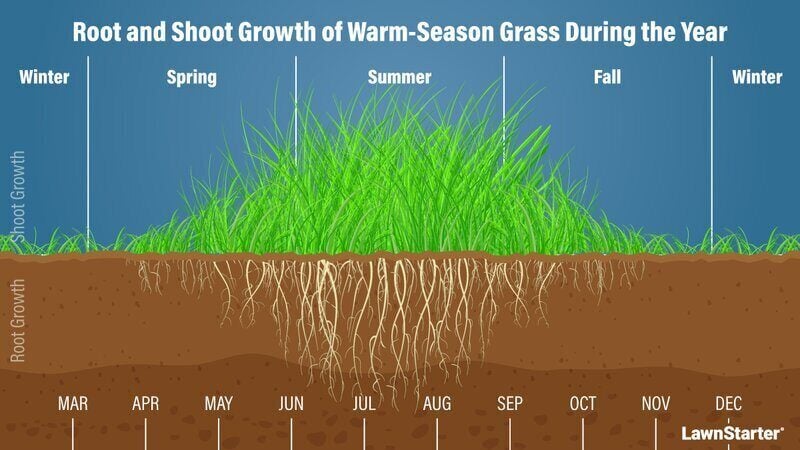
Experts at the University of California advise not dethatching if you notice weeds germinating to prevent them from invading your turf.
If you’re planning when to dethatch the lawn, also keep in mind soil and weather conditions:
- Don’t dethatch on wet soil, as the roots will pull out more easily. Wait a couple of days after rain or irrigation until the soil is barely moist (not totally dry).
- Avoid dethatching the lawn during hot, dry days when the grass is already stressed.
See Related: Signs Your Lawn Has Too Much Thatch
Decide on the Dethatching Method
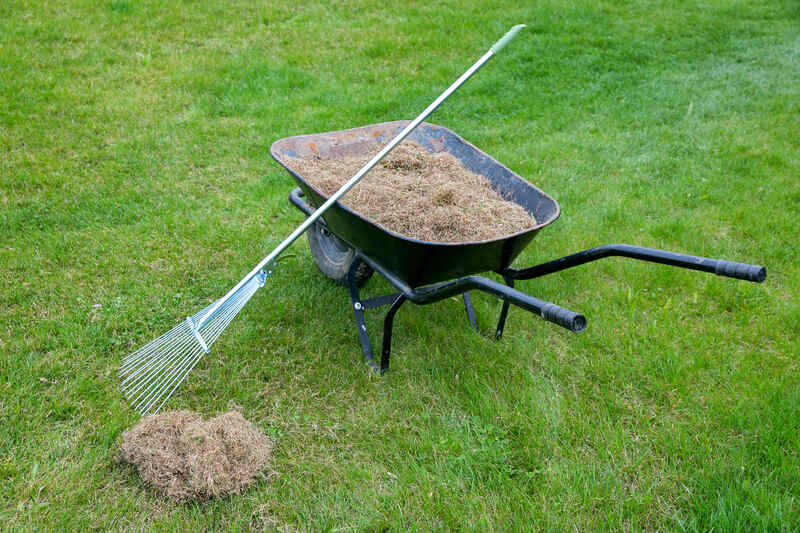
There are three methods for thinning the thatch and seeing results immediately: manually dethatch with a rake, use a dethatching machine, or hire a professional for this task. Here’s what each method entails.
Manual Dethatching
Best for: Lawn sections or small lawns with thatch less than 1-inch thick.
Manual dethatching uses a rake and body force, so it’s only practical for small lawns or lawn sections. It is labor-intensive and time-consuming. If you use a thatch rake, you can expect to work about an hour to dethatch 250 square feet — including mowing, dethatching, and cleaning the debris.
On the other hand, it is gentler with the grass and costs less than dethatching with a machine. (A thatch rake costs around $44.)
Mechanical dethatching
Best for: Medium and large lawns with thatch over 1-inch thick.
Using an engine-powered dethatcher, such as a power rake or verticutter (vertical mower), this method is less physically demanding and takes less time — about 40-45 minutes for 2,000 square feet.
On the other hand, it is more aggressive with the grass and more expensive. A corded electric lawn dethatcher typically costs about $150 for a basic model. If you need a more powerful dethatcher, you can rent a gas-powered model for around $65 for a four-hour period.
See Related: What is Verticutting?
Professional Dethatching
Best for: Large lawns and thatch thicker than 1 1/2 inches.
Dethatching is not an easy lawn care task. If you’re not familiar with dethaching machines and your lawn has thick thatch, you’ll get better results and a healthier lawn by letting a pro handle the job. Professional lawn dethatching costs $0.04 and $0.06 per square foot (or around $175 per hour).
According to experts at Iowa State University, in some cases, when thatch is over 1 1/2 inches thick, you might need to have the thatch and turf stripped off and reestablish the lawn from grass or sod.
See Related: How to Plant and Grow Grass Seed in 9 Steps
Clean and Mow the Lawn
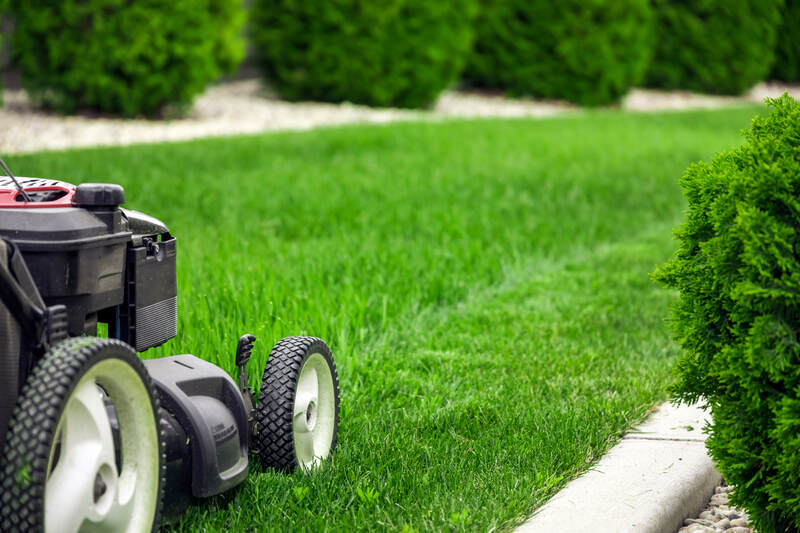
Lawn preparation protects the grass, prevents accidents, and helps you get better results. Here’s how to prepare the lawn for dethatching:
- Clean the lawn. Remove debris like stones, twigs, and toys.
- Mark shallow irrigation lines, utilities, and sprinkler heads to avoid damaging them (especially important for verticutters).
- Mow the lawn shorter than the usual mowing height but not lower than the minimum recommended for your type of grass. It reduces damage to grass blades, and the lawn dethatcher blades have better access to the thatch layer.
Remember to:
- Only cut a maximum of 1/3 of the blade length in one mowing session to avoid damaging the grass.
- Sharpen the mower blades if necessary to avoid damaging the grass.
- Avoid mowing when the grass is wet.
- Bag the grass clippings, or they’ll add to the debris you’re collecting after dethatching.
See Related:
Manual Dethatching
To dethatch the lawn manually, you need a rake. You can use various types of rakes, such as a leaf rake, a garden rake, or a dethatching rake. Dethatching rakes are the most effective but also harder to use. They are heavier and have long, slightly curved metal blades that can cut deeper into the thatch layer.
Here’s how to dethatch a lawn with a rake:
- Put on some good-quality garden gloves to avoid getting blisters on your hands.
- If it’s a large area, divide it into sections and dethatch one at a time, pausing to rest.
- Rake small rows until debris piles up. Then, move the debris to the side and continue. This way, it’s easy to see where you dethatched and what areas are left.
- Rake with a push-and-pull motion. As you pull the rake towards you, you pull out debris and bits of thatch. When you push it backward, you clean the debris from the rake’s blades.
- Don’t push the rake too deep into the ground. If you see small pieces of thatch and dirt coming up to the surface, that is deep enough.
- Rake and collect the debris. For a 1,000-square-foot lawn, expect 2-3 lawn waste bags. You can use the debris as mulch in the garden, add it to the compost, or bag it for curbside recycling.
This video shows you how to approach manual dethatching on an average lawn.
See Related:
Mechanical Dethatching
If you have a larger lawn, mechanical dethatching is the best choice. It requires a machine such as a power rake or a verticutter, also known as a vertical mower.
Power rakes typically have tines or springs, and verticutters have blades. However, some dethatchers come with both accessories.
- Blades cut the thatch layer and bring pieces to the surface. They are a better option for warm-season grasses because they can cut their runners and make the turf denser.
- Tines loosen the thatch but are less effective at removing parts of the matted layer. They are more suitable for dethatching cool-season turf.
Here’s how to dethatch the lawn with a powered dethatcher:
- If you own a dethatcher, adjust the height of the blades or tines. They shouldn’t go deeper than 1/2 inch into the soil.
- If it’s a rental, ask the rental store to adjust the blades for you and get detailed instructions on how to use the dethatcher.
- Test the dethatcher on a section of the lawn that is less visible to get some experience.
- Go over your lawn two or three times in different directions, similar to how you mow the grass.
- Rake and collect the debris (dead grass and thatch). Use it as mulch or compost, or bag it for curbside recycling.
This video shows the basic steps of using a mechanical dethatcher.
What to Do After Dethatching
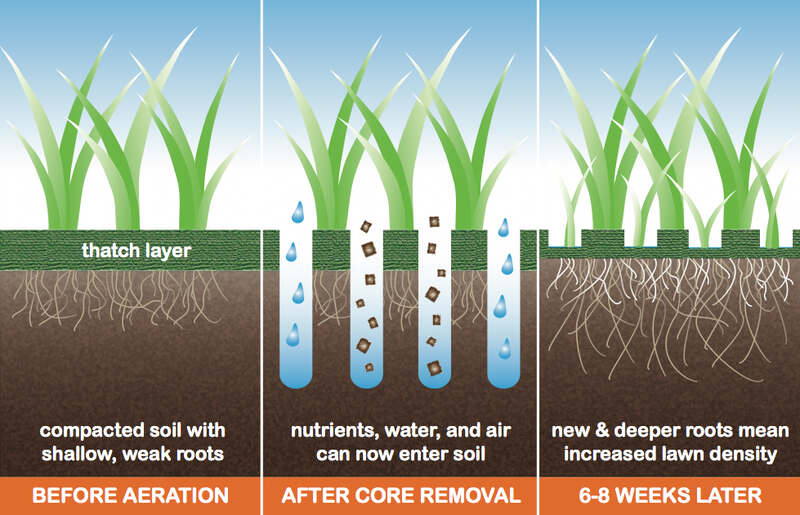
- Aerate the lawn if the soil is compacted. Aeration ensures that more nutrients, water, and oxygen reach the roots and prevents thatch buildup by bringing soil and beneficial organisms to the surface.
- Overseed the lawn if it has thinned or has bare spots. If you’re having pest problems, now is a good time to add more resilient grass types.
- Fertilize the lawn to help it recover. Depending on the type of grass, you should typically apply 0.5 to 1 pound of nitrogen per 1,000 square feet.
- Water the lawn thoroughly after dethatching to ensure the plants have enough water to repair damage and grow deep, strong roots.
Dethatching is only one way to control the thatch in your turf. The other is to make sure you use lawn care practices that don’t support thatch buildup. Here’s how to prevent thatch in your lawn: avoid overwatering and overfertilization, mow the lawn regularly, aerate yearly, and reduce chemical pesticides.
See Related:
FAQ
Grasses that spread horizontally through rhizomes and/or stolons are more prone to thatch. Common examples include Bermudagrass, Zoysiagrass, St. Augustinegrass, and Kentucky bluegrass.
Chemical or microbial dethatching uses liquid products sprayed on the lawn to boost the population of soil microorganisms that decompose the thatch.
Yes, you can aerate and dethatch at the same time. However, it’s best to dethatch before you aerate so the core aerator tines can better access the soil.
Help Your Lawn Breathe
When thatch starts choking your turf, it’s time for a lawn rescue. LawnStarter connects you with top-tier lawn care pros who are ready to dethatch and revive your lawn. Find a lawn care professional near you and reclaim your green, lush paradise.
Sources:
- Doubrava, N (1999). Controlling Thatch in Lawns. https://hgic.clemson.edu/factsheet/controlling-thatch-in-lawns/
- Minner, D.D., Everhart, E. (2009). Thatch Control in the Home Lawn. Iowa State University. https://store.extension.iastate.edu/product/Thatch-Control-in-the-Home-Lawn
- Sports Turf Managers Association (n.d). Thatch Management. https://www.stma.org/sites/stma/files/STMA_Bulletins/Thatch_Management.pdf
- University of California Agriculture and Natural Resources (n.d). When to dethatch. https://ipm.ucanr.edu/TOOLS/TURF/MAINTAIN/thatchtime.html
LawnStarter participates in the Amazon Services LLC Associates Program, an affiliate advertising program. LawnStarter may earn revenue from products promoted in this article.
Main Image Credit: Ingo Bartussek / Adobe Stock